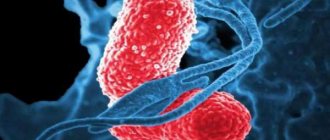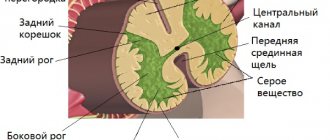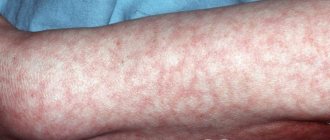Recently, forms of inflammatory pathologies often occur in atypical forms. Asymptomatic pneumonia is not uncommon and is more common in adults aged 22 to 40 years. Pneumonia without symptoms and characteristic signs is less common in children due to their higher immune status.
Among the adult population, people who are addicted to alcoholic beverages are at risk of catching pneumonia without a cough or fever. Although those who like to self-treat with antibiotics can also count themselves among the potential patients with a similar diagnosis. In this material, we will consider the probable forms of pneumonia, and also tell you how to recognize this disease in a timely manner.
Cases of the formation of an atypical clinical picture with such a dangerous disease have been encountered in the last 10 years. The increase in their number is due to the development of new forms of antibacterial drugs, which are taken uncontrolled for any sign of a cold. This is a reason to think about the fact that antibiotics not only have a detrimental effect on certain strains of pathogenic microflora. They also suppress the activity of the human immune system. Avoid using them yourself. Always seek medical help if you have a cough, shortness of breath, or general weakness. Prevention of mortality in latent forms of pneumonia is possible only in this way.
Causes of latent pneumonia
The main reason for the appearance of latent pneumonia is weakened immunity. Prolonged stress, chronic illnesses, and hormonal imbalances deplete the body's defenses. As a result, they stop responding to pathogen attacks with an increase in temperature and increased production of interferon.
With long-term treatment of pneumonia, a period of “imaginary well-being” begins. An adult patient feels a weakening of painful symptoms, but the disease continues to develop.
Uncontrolled use of antibiotics leads to mutation of pathogenic bacteria. They develop resistance to the drug and the ability to survive and reproduce during treatment. At the same time, the symptoms of the disease are blurred. The temperature does not rise above normal, cough receptors lose sensitivity.
Many adults and older people suffer from various chronic diseases. A small number of pathogenic bacteria and viruses are constantly present in their blood. Because of this, the immune system reacts poorly to the emergence of a new pathogen. The person feels pain and weakness, but his body temperature remains within normal limits.
Features of the clinical picture
The occurrence of pain in smokers is due to various factors. The causes can be determined by the location of the discomfort. It can be localized behind, in front, on the left or right:
- Pain in the left side of the chest and interscapular area indicates damage to the heart.
- Acute shooting discomfort indicates an ulcerative lesion of the stomach. Damage to the gallbladder is also the cause.
- Stitching pain in the lung tissue indicates damage to this organ. The cause is an inflammatory process.
- Pain that increases with inhalation indicates various diseases - tuberculosis, flu, heart attack. The same symptom appears with inflammatory damage to the pericardial sac.
Attention! Pain syndrome always indicates a malfunction in the body. It is worth considering that abnormal processes often occur almost asymptomatically. This is due to gradual adaptation to the constant ingestion of harmful elements.
Symptoms of pneumonia without fever in adults
Unlike small children, an adult can understand when an inflammatory process develops in his body. In the absence of high temperature, he pays attention to other symptoms, remembers their features, and describes them in detail to the doctor. Timely contact with a specialist helps to identify pneumonia at an early stage and treat it with gentle conservative methods.
The main symptom of pneumonia is cough. With the help of chest spasms, the airways are cleared of secretory fluid. Inflammation of the lungs is indicated by a wet cough with white, yellow or green sputum. The attacks are worse in the morning after a night's sleep, given the horizontal position of the body.
When pneumonia develops, the patient experiences difficulty breathing deeply. To avoid oxygen starvation, an adult breathes shallowly and frequently.
The appearance of an adult sick person changes. The skin of the face becomes pale, an unhealthy blush appears on the cheeks in the form of red spots. With pneumonia, sweating increases, especially at night. Because of this, there is a constant desire to drink water.
Even in the absence of fever, the patient constantly feels pain in the temples, back of the head, and chest.
Another striking symptom of the development of pneumonia is unusual movement of the chest during breathing. An adult may notice that one side of the lung remains almost motionless. To confirm this state, place your palms on your ribs and take a deep breath.
In pneumonia without fever, bacterial pathogens actively multiply in the lung tissues. Their waste products enter the bloodstream, causing intoxication of the body. Symptoms of this condition are fatigue, weakness, aches in muscles and joints. The disease is accompanied by an accelerated heartbeat and shortness of breath with minimal physical activity, and then at rest.
Signs of the disease
Pneumonia is considered a rather dangerous disease; if not detected in time, it can cause serious complications and even death. Therefore, in order for the treatment of the disease to be easier, it is necessary to detect it in time and know how it manifests itself.
The manifestation of pneumonia in adults without fever is accompanied by a strong inflammatory process in the lungs. It cannot be said that if the symptoms appear weakly or do not appear at all, then the inflammation is insignificant. This form of the disease is not contagious, but was caused by infection in the human body.
The symptoms of pneumonia, which is accompanied by fever, are very different from those characterized by the absence of fever. Sometimes in this case the patient is tormented by a cough. This happens after a long cold, then the person feels relief, the main symptoms go away, but he is left with a cough, if it is not severe, they simply do not pay much attention to it.
With pneumonia, the volume of healthy lung tissue decreases, so a person does not have enough air and has to breathe more often. In this way, the lack of air is compensated and oxygen starvation of the body is prevented. Therefore, if such a sign is noted, it may be pneumonia, but without fever in adults.
And also, there are the following signs of pneumonia in an adult without fever:
- Unreasonable weakness, a person feels very tired after performing simple work or after minor physical activity. He even finds it difficult to climb stairs.
- Pain in the chest area. In older people, the pain can shift lower or higher; they often perceive it as a spasm of muscle tissue.
- As already mentioned, a cough may not appear due to taking medications for it. But in other cases, the patient is tormented by a characteristic cough.
- If the patient notices that his chest moves in an unusual, uneven manner when breathing, this may indicate pneumonia.
- With minor physical exertion, the heartbeat noticeably increases.
- Severe pain is felt when turning the upper body.
- With pneumonia, the body temperature remains around 370C. Since in the simple form the temperature during pneumonia rises much higher, then it is clear that there is a strong inflammatory process in the body. And at such a temperature it is not at all clear what is happening and why it does not decrease. In such a situation, the patient does not particularly panic, because without fever, he is not aware of the complexity of the disease.
These are quite unusual symptoms of pneumonia in an adult, which occurs without fever, so it is clear why it is so difficult to diagnose the latent stage of the disease. Only vast experience and knowledge will help the doctor unravel the disease.
Symptoms of pneumonia without fever in children
Unlike adults, young children cannot explain what they feel and where it hurts. Parents should consult a doctor if the following symptoms occur:
- lethargy, drowsiness;
- pale skin;
- deterioration in academic performance;
- giving up favorite leisure activities;
- thirst, poor appetite;
- fast fatiguability;
- capriciousness, tearfulness.
Pay attention to the depth of the child's breathing during sleep, the presence of wheezing and whistling in the chest.
Treatment
The doctor will definitely pay attention to such categories of patients who have a reduced level of immunity. And these are elderly people, children. After viewing fluoroscopic images, the results of blood and urine tests, the doctor will prescribe treatment, which should be strictly under his supervision. When taking medications, the patient must also comply with the following rules:
- Turn over in bed more often to avoid congestion in the lungs and the formation of adhesions;
- Nutrition should be balanced. Drink warm milk with honey and broth more often. Be sure to drink linden, chamomile, and mint teas. If the patient is very weak or elderly, then a little grape wine can be given to increase his strength;
- It is advisable to do breathing exercises at least five times a day.
Pneumonia without fever, however, as with classic symptoms, needs to be treated comprehensively.
By medication
Antibiotics are used to treat pneumonia without fever:
- Cephalosporins. Cefotaxime, Ceftriaxone - used for uncomplicated pneumonia.
- Macrolides. Azithromycin, Erythromycin are effective in the treatment of atypical pneumonia.
- Carbapenems. Meropenem is a broad-spectrum antibiotic. Effective in complex forms of the disease.
While taking antibiotics, you should not forget to take probiotics at the same time. For example, Linux.
- Antiviral drugs , if the causative agents of the disease are viruses - Arbidol, Acyclovir;
- Mucolytics and expectorants are used to thin sputum (Ambroxol, Bromhexine);
- Bronchodilators for difficulty breathing (Berotek, Eufillin);
- Immunomodulators;
- Antihistamines. Used to reduce inflammation and as a preventive measure against allergies (Loratadine, Diazolin);
- Painkillers;
- As soon as the condition improves a little, you can use nebulizer inhalations (Dikasan, Lazolvan, Mukolvan). And also use saline and alkaline solutions, inhalations of medicinal herbs (chamomile, sage, coltsfoot).
average price 200 rub.
Pneumonia without fever can be treated with traditional methods, but this should be a concomitant treatment, and in no case the main one. The patient's condition can be alleviated with natural medicines.
Folk remedies
Pneumonia is an insidious and complex disease. At the first suspicion of it, you need to see a doctor. In unadvanced cases, treatment can be outpatient. Well, if the disease has gained momentum, then it can only be stopped in a hospital setting. But if home treatment is prescribed, then in parallel with basic medicines, you can also use folk remedies. Of course, first consult with your doctor about the advisability of their use at one or another stage of the disease. There are quite effective recipes against pneumonia without fever:
- It will help thin and remove sputum, and will also act as a general tonic - garlic with milk. Boil a glass of milk, let it cool slightly and pour a teaspoon of garlic juice into it.
- To facilitate the removal of sputum, you can let two tablespoons of oregano brew in a glass of boiling water. It is not only a strong expectorant, but also an excellent diaphoretic.
- The following remedy can alleviate the condition of a patient with pneumonia: combine a tablespoon of linden honey with two tablespoons of olive oil. Pour one hundred grams of high-quality vodka or moonshine into the mixture. Take a tablespoon up to four times a day. Also try the aloe and honey cough recipes collected here.
- An old healer's recipe. Place 6 homemade eggs with shells in a jar. Squeeze the juice from ten medium-sized lemons. After about a week, when you look into the jar, you will see that the citric acid has dissolved the shell. This means that you can proceed to the second stage of manufacturing the product. Add a glass of May or linden honey, pour in a glass of cognac. Stir and pour into a dark glass bowl. Drink a tablespoon after meals.
- To increase immunity, you can drink infusions of eleutherococcus and ginseng.
- Vanga recommended making a compress for pneumonia without fever, which can be prepared very quickly because all the ingredients are at hand. Knead a stiff dough, but instead of water use homemade kvass, a shot of vinegar, olive or sunflower oil and wine. Apply to the sore spot.
- Brew three small handfuls of coltsfoot, elderberry flowers, and knotweed herb in a glass of boiling water. Take a quarter glass up to four times a day.
And, as always, it is still easier to prevent a disease than to treat it later, crippling your nerves and emptying your wallet.
Licorice root: instructions for use in syrup form
COPD: what kind of disease this article will tell you.
Consequences of pneumonia in newborns //drlor.online/zabolevaniya/legkix/pnevmoniya/u-novorozhdennogo-prichiny-posledstviya-oslozhneniya.html
How does pneumonia manifest in bedridden patients?
The immunity of bedridden patients is weakened, so pneumonia develops in them in a latent form, without high fever and intense cough. If other symptoms are ignored, pneumonia can be fatal.
The cause of pneumonia is the shallow breathing of patients. The inability to cough up bronchial secretions and the limited range of movement of the chest leads to stagnation of blood in the vessels and mucus in the lungs. Weakened body defenses allow attacks from various pathogens, after which the disease develops.
Caregivers or relatives of bedridden patients need to pay attention to the following manifestations:
- unhealthy blush on a pale face;
- the need to change sweat-soaked clothes and underwear every day;
- refusal to eat when very thirsty;
- sudden loss of interest in the environment.
If the symptoms are accompanied by confusion and loss of consciousness, the patient needs resuscitation measures and qualified medical care.
Non-dangerous causes of pain in the lungs
Despite the fact that there are many dangerous diseases, there are situations when special treatment is not required at all. If your lungs hurt when you inhale, the following may be the cause:
- Presence of intercostal neuralgia. In this case, the pain is acute, and can be compared to a needle prick.
- Rapid increase in lung capacity. Most often this phenomenon occurs in adolescence.
- Overtraining. This is typical for people who do a lot of active sports, since after it absolutely all muscle groups, including the lungs, can hurt.
In the absence of more serious symptoms of the disease, there is no need for medical treatment. It’s enough just to have a good rest, go for a massage or go to the bathhouse.
Diagnostic methods
If a latent form of pneumonia is suspected, the doctor prescribes a study of the gas composition of the blood, bronchial lavage water, and material obtained during bronchoscopy. The following tests are considered useless:
- blood on the concentration of leukocytes (due to a weak immune response);
- sputum from the bronchi (due to the inability to cough up secretory mucus);
- x-ray (due to the x-ray negative form of the disease).
Hardware methods for determining pneumonia without fever include bronchoscopy. The procedure is performed on an outpatient basis under local anesthesia. An adult sits on a chair, straightens his back, relaxes his airways. The doctor inserts a device with a video camera and a lighting device into his throat through his nose or mouth. He examines the tissues of the bronchi and lungs on the screen, and, if necessary, takes biomaterial for research.
Treatment methods for atypical pneumonia
To treat the disease, you need to try to pay maximum attention not only to pills or injections, but also to the restoration of the body after an attack by pathological microorganisms.
Patient's environment
To fully restore a person’s strength, a temporary change in the usual pace of life will be required. The patient must remain in bed, especially in the first days of the illness, which are characterized by increased weakness and fatigue.
The room where a sick person is located must be ventilated. Pneumonia can be caused by viruses entering the body. To prevent the disease from becoming contagious, and to prevent viruses from leaving a weakened person faster, it is necessary to ventilate the room and monitor the humidity in the room.
Diet
During the period of illness, a weakened body may not take food in the same volume as before the illness. It is important to give the patient plenty of fluids to help flush out toxins. It is not necessary to stuff an adult or a child with food.
If food is served, you need to monitor its usefulness - it must be fortified. Seasonal fruits are also used for pneumonia. They naturally boost immunity, and the patient recovers and recovers faster.
Breathing exercises
The benefits of breathing exercises have been scientifically proven. But it needs to be done correctly, using all the recommendations of authors and experts.
There are several proprietary techniques for such breathing exercises. Breathing exercises by Strelnikova are considered popular and effective. It helps improve blood circulation, restore proper breathing, and quickly remove mucus from the body.
Medical treatment
Depending on the causative agent of the infection and the severity of its course, the doctor prescribes a specific antibacterial drug. The most effective in treating pneumonia are cephalosporin or penicillin antibiotics, as well as macrolides. The most popular of them are Flemoxin, Clarithromycin, Amoxicillin, Cefazolin. Antibacterial drugs are taken for at least a week; in case of severe disease, they are used by injection. Sometimes two types of antibiotics are prescribed.
In addition to antibiotics, symptomatic treatment is used: expectorants and sputum thinners. They are used for wet coughs (ACC, Bromhexine, Lazolvan).
If the cough is hysterical, dry, and there is no expectoration, you need to drink sputum eliminators. Inhalation through a nebulizer is useful in this case. Through inhalation, a person takes medical substances that do not affect internal organs. For shortness of breath and dry cough, bronchodilator medications should be used.
In severe forms of pneumonia, immunomodulating therapy is prescribed. Many mothers like to give immunomodulators at the slightest manifestation of a cold. But in this way, the child’s body gets used to the drug, and when treatment is needed, the drug may not work.
With such an illness, constant monitoring of the patient is required, so the patient must be hospitalized.
ethnoscience
Treating pneumonia at home is possible, but only after consulting a doctor.
Taking any independent actions is extremely dangerous. This can lead to wasted time and lack of results from treatment. Any folk remedies for pneumonia should be taken as adjuncts to the treatment prescribed by the doctor. Here are some useful recipes:
- Prepare a balm from aloe leaves, honey and Cahors. Everything is mixed in a proportion of 200x300x500 and placed in a dark place for 2 weeks. After this, drink a tablespoon 4 times a day.
- Mix freshly squeezed plantain leaf juice with honey and sugar. Drink 4 times a day. This remedy removes mucus from the lungs well.
- Make an infusion of oats and garlic. To do this, take a glass of oats and a head of garlic, pour in 2 liters of milk and simmer in the oven for at least 2 hours. Drink a third of a glass hot before bed.
- Stir goose fat with crushed garlic and steam in a water bath for 7 minutes. Moisten parchment paper and apply to the chest like a compress. Proceed with caution and monitor the temperature. If there is an upward deviation, you need to remove everything immediately.
- Grate the horseradish root, put it in some container and inhale its vapors every 3 hours. You can also make a tincture - pour horseradish root with alcohol and place in a cool, dark place. Drink a teaspoon 2 times a day.
Only for adults; alcohol tinctures are contraindicated for children. For them, it is better to use decoctions of water.
In case of pneumonia, even if there is no temperature, heating the chest with any compresses, hot baths or other thermal procedures is not allowed. They can instantly increase the body temperature, develop pulmonary edema, and the patient will die.
Consequences and complications
Pneumonia is dangerous due to its complications, which are caused by various reasons. The occurrence of negative consequences of the disease is influenced by the state of the patient’s immune system and the factors that caused the pathological process. Among the most common:
- severe concomitant diseases (AIDS, cancer);
- activity of the embedded agent;
- the patient is too young or old.
In medical practice, there are two types of complications of pneumonia: those located inside the bronchopulmonary system and outside the source of inflammation, which spread to all systems and organs. The first include:
- empyema (damage to the pleura);
- gangrene;
- abscesses;
- obstructive syndrome;
- pulmonary edema;
- acute failure of the respiratory system.
Complications of pneumonia that extend beyond the pulmonary system:
- meningitis;
- toxic shock of infectious origin;
- encephalitis;
- sepsis;
- pathologies of the cardiovascular system;
- reactive psychoses;
- anemia;
- coma;
- death.
Prevention
The lion's share of pneumonia is caused by the microorganism pneumococcus, and the polyvalent vaccine Priorix has been created against it and its strains. They are also vaccinated against Haemophilus influenzae, a common cause of pneumonia. If you get these two vaccinations, you can reduce the likelihood of developing the disease. Unfortunately, this measure does not provide a 100% guarantee, therefore, in order to prevent pneumonia, it is important to follow prevention.
Since pneumonia is secondary, especially in bedridden patients, it is necessary to diagnose and treat acute respiratory infections in a timely manner. When pulmonary inflammation is primary, it is usually associated with decreased immunity (congenital or acquired). In this situation, it is necessary to take measures to strengthen the immune system:
- avoid hypothermia;
- exercise;
- Healthy food;
- do not overexert yourself at work or study;
- avoid stress;
- regularly use various methods of hardening the body (dousing, rubbing, contrast shower);
- stop smoking and drinking alcoholic beverages;
- carry out rehabilitation of chronic inflammation of the nasopharynx;
- combat dust pollution in premises;
- do breathing exercises;
- take multivitamin complexes, especially in the spring and winter.
Reasons for the absence of a symptom
Latent pneumonia is the most dangerous form of the disease, since the inflammatory process can occur in a completely unusual way: there may be no cough, fever and wheezing , therefore such patients attribute general weakness and malaise to a cold or mild infection, without taking the right actions to stop inflammatory process.
This type of disease occurs in people of all age groups, but the greatest risk of detecting this pathology is in older people over 60 years of age. There is no single cause for the occurrence of this pathology; pneumonia without cough is caused by a number of factors, including:
- Disruption of the immune system and, as a result, a decrease in the body’s protective functions.
- Incorrect treatment of previously suffered diseases with antitussives and antibiotics, where the first group of drugs stops coughing attacks, preventing the removal of phlegm from the body, and the second, due to uncontrolled use, is addictive, which significantly reduces their medicinal properties.
- Inflammation is a consequence of past illnesses: in the form of complications of influenza, a lingering cold, when the bronchi have not cleared mucus, as well as after surgical interventions: internal organ transplantation, artificial ventilation of the lungs or tracheal intubation.
There are often cases when a patient acquires this disease after visiting an infectious diseases medical facility; people suffering from drug and alcohol addictions, HIV-infected patients, people who have been found to have intracellular pathogens, such as chlamydia, mycoplasma, staphylococcus and others are also at risk. .
Pulmonary rheumatism
Today the disease is rare. There are other names for it: pneumonitis, pulmonary rheumatism, rheumatic pulmonary vasculitis. The disease is characterized by the appearance of weakness and shortness of breath, increased temperature, tachycardia, increased ESR, and neutrophilic leukocytosis. In addition, difficulty breathing and wheezing are observed.
Antirheumatic therapy is used for treatment, and all the above symptoms disappear very quickly. The main thing here is to start treatment on time and prevent complications that can cause pneumonia.
Flu
An infectious disease such as influenza can also cause discomfort and pain in the lung area. The disease begins very quickly and acutely. The flu is accompanied by an increase in temperature to 38-40 degrees, headache, nasal congestion, hoarseness, a feeling of severe weakness and weakness.
In addition, there is pain in the eyeballs, which noticeably increases during eye movements, as well as lacrimation and photophobia. Manifestations of body intoxication and catarrhal syndrome are often encountered. A dry cough in moderate to severe forms of influenza can cause severe chest pain that begins in the trachea and spreads to the lungs.
Treatment of the disease involves several areas at once: strengthening the immune system, detoxifying the body, increasing its protective functions and fighting the virus itself. The drug “Antigrippin” is widely known, which helps get rid of headaches, reduce signs of toxicosis and stop the spread of inflammatory processes.
While a mild form of influenza can be treated at home, a severe form of influenza requires hospitalization. Constant medical supervision will help to avoid various kinds of complications. It is very important to stay in bed and drink plenty of vitamins (fruit juices, rosehip infusion, teas, compotes).
Heart disease: myocardial infarction and dry pericarditis
Dry pleurisy is most often secondary in nature and can occur in parallel with pneumonia, pulmonary infarction, bronchiectasis, lung abscess, cancer, and so on. The disease is characterized by inflammation of the pleura (parietal and visceral), as well as the subsequent deposition of fibrin on its surface.
Determining the onset of dry pleurisy can be quite difficult, since in the first stages there are no special symptoms. But after some time, an acute development of the disease occurs. At the same moment, pain appears in the lungs during inhalation, coughing, sneezing, and also when pressing on the affected area.
Treatment of dry pleurisy primarily involves getting rid of the root cause of the disease. It is also possible to use analgesic, anti-inflammatory and antitussive drugs. During the acute period of the disease, it is advisable to maintain bed rest and use a variety of warming compresses, cups, and mustard plasters.
Although the two diseases differ in their underlying symptoms, they have several common symptoms. This is a constant pain in the chest, which noticeably increases with coughing, sneezing, deep breathing and even changing body position. In addition, it can move into the arm, shoulder, jaw and neck.
To eliminate the symptoms of diseases, antianginal (“Nitroglycerin”) and non-steroidal anti-inflammatory drugs (“Ibuprofen”, “Indomethacin”) are used. If the use of the above drugs is ineffective, the patient is prescribed glucocorticosteroids (“Prednisolone”).











